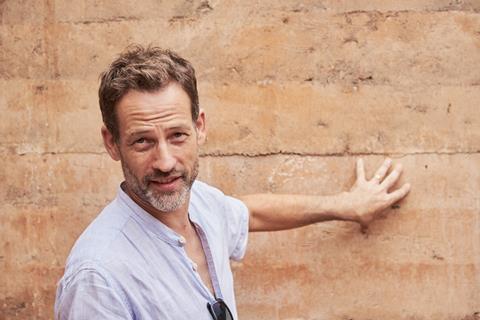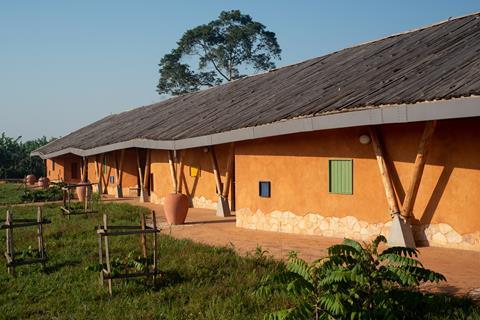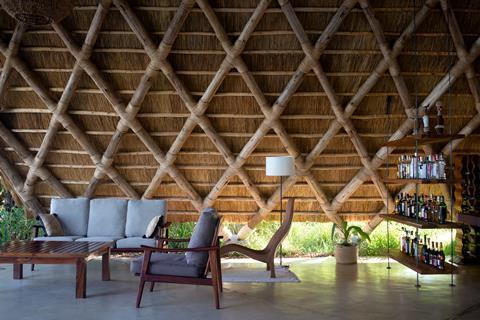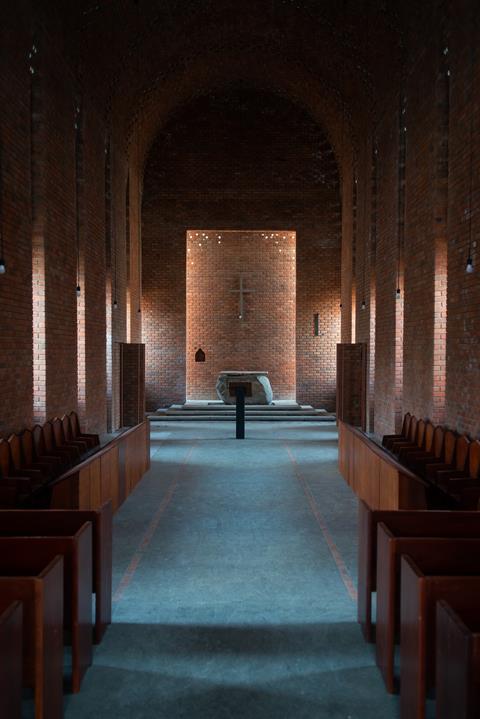”Sustainability” is too vague a concept when it comes to the environmental crisis that we are facing. We need to think in terms of “appropriate design” and embrace new procurement models, writes Felix Holland

The term “sustainability” is being used to an ever-greater extent, not only in the architectural world. Whether it is a grassroots project constructing low-cost housing with local materials or a global corporate player greenwashing its operations, both will happily make liberal use of a poorly defined term that the climate crisis has rightly pushed to the top of the human agenda.
Working as an architect in Uganda and trying to find environmentally conscious and regionally meaningful ways of designing and building, I have grown increasingly wary of the sustainability tag. While my understanding of sustainability was always holistic and qualitative – not based on high-tech optimisation, number crunching or carbon offsetting – it was the vagueness of the concept that made me look for something more fundamental, more methodical. It made me discover my love for the concept of “appropriateness”.
The starting point for my understanding of “appropriate architecture” would be a design posture of “creative observation”; context is everything, and a design needs to be discovered, not invented. The simple question, “what is appropriate?” can be applied to virtually every design decision and has a clarity to it that is often missing from discussions around sustainability.
Appropriate means getting the priorities right at the very beginning of the design process
The answers will almost always be gradual, relative, practical and rarely uniform and unquestionable. Appropriateness is about finding balance more than coming to radical answers.
One of the many questions an architect must find an answer to early on in a project is, “what are the right materials for this project?” An architect thinking about what was appropriate would approach this issue by exploring the vicinity of the site, by looking for available materials nearby and by understanding what the locals are using for their buildings, and why – it is that simple.
As is embracing the need to utilise materials with low embodied energy. A product that is manufactured with high amounts of energy or comes from far away will rarely be a more appropriate choice than stone from the locality or earth excavated on the site itself. No cooling technique will be smarter than orienting a building correctly to the sun and wind.
A design philosophy of contextualism opens the designer’s mind to a location or to a problem
Humans have come up with so many innovative technologies – air-conditioning, insulation, solar glazing – but the most powerful answer will always be to correctly orient a building and to design facades that respond to sun, wind and rain.
Appropriate means getting the priorities right at the very beginning of the design process, rather than having to fix a preventable problem at a later point. Certainly, in an African context where operational budgets tend to be low to non-existent, “passive” and “low-tech” will almost always be preferable to solutions that are based on complex technologies or imported solutions.

But the desire to find appropriate answers is not limited to construction technology and engineering. Every location, every user, every function, every social or cultural context can be approached with a similar mindset.
A design philosophy of contextualism opens the designer’s mind to a location or to a problem. It encourages spatial organisms to grow organically, rather than for objects to be manufactured, and for spaces to emerge rather than sculptural statements to be imposed.
It is therefore important to find an appropriate type of procurement, too - one that is in harmony with design, location and economy
It is almost self-evident that such attitude is not limited to “sustainable architecture in Africa” and would apply whether one designs for refugees in Uganda or for stockbrokers in Frankfurt. A contextual design philosophy will work everywhere on the globe – poor or rich, hot or cold, rural or urban – but the successful implementation of projects does require an approach that is tailored to the local economy.
It is therefore important to find an appropriate type of procurement, too – one that is in harmony with design, location and economy. In the case of East Africa such tailoring is largely related to a lack of skilled builders and contractors.
Within the formal sector, the procurement system most common to Uganda is a traditional general contractor arrangement, with architect and consultants acting as the client’s agents during the design and implementation phase of the project.

This system deliberately keeps designers and builders apart, based on the idea that each party controls and regulates the other, thereby protecting the interests of a non-technical client. At its core, it is a system based on adversity with financial gain the glue that binds the parties together.
Seen in this way, it is a pretty poor starting point for any creative process to take place and, having spent most of my professional life implementing projects under this type of procurement, it is my view that good projects emerge despite rather than because of it.
In 2019, this led to the creation of Localworks, a multi-disciplinary design and build collaborative
Over the years, our team deployed numerous strategies to improve our way of delivering, with varying levels of success and frustration. While our desire to design and experiment never suffered, we did eventually come to the realisation that this traditional procurement approach was not benefiting the client or ourselves and that, if not addressed boldly, there was an acute risk of losing the joy of building.
In 2019, this led to the creation of Localworks, a multi-disciplinary design and build collaborative. Under what we refer to as the “master builder” approach, designers and builders are now part of the same team and deliver turnkey projects from beginning to end.

Localworks was born out of the realisation that the “how” is as important as the “what”; that the process of designing and constructing a building is a piece of art in itself; and that art tends not to grow out of an adversarial, profit-driven relationship, but out of a genuine desire to create, collaborate and produce something of real value.
But more critically, what we do is again based on the most important resource an architect can draw from: the joy of building
We were convinced that if we took more care about the process of designing and building, if we put all our energy and imagination into bringing about a productive creative process, there would be a much greater likelihood for the outcome to be of very good quality, too.
We elevated designers to become builders, and builders became part of the design team. 1:1 mock-ups are now often built together – right in the studio where they are later turned into technical drawings – and architects and engineers are directly involved in the execution of their own fabrication drawings by supporting the craftsmen on site.
While still early days, we feel that we may have found an appropriate model of delivering our type of sustainable architecture for this region. But more critically, what we do is again based on the most important resource an architect can draw from: the joy of building.
Postscript
Felix Holland is co-founder and principal architect at Localworks, a multidisciplinary design and build collaborative based in Kampala, Uganda. Felix grew up and studied architecture and urban design in Germany. In 2004, he moved to Uganda and joined a British firm of architects and engineers. After eight years, he started his own practice, Studio FH Architects, which in 2019 became a founding member of the Localworks collaborative that specialises in the design and realisation of appropriate architecture.
















No comments yet